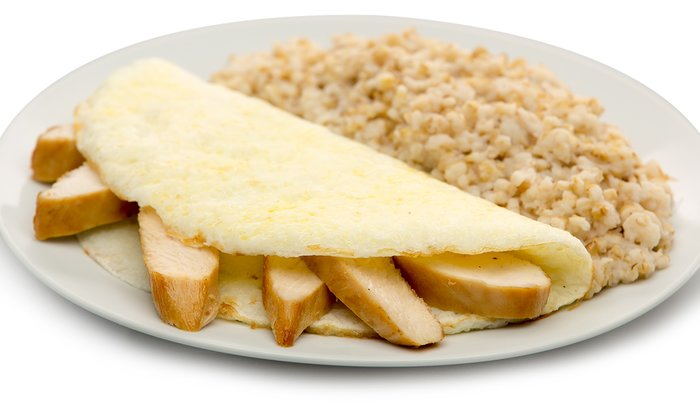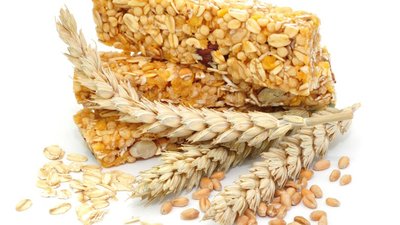The effects from a poor diet can dog you from dawn till dusk. You've been there: By 9 a.m., you're ready for another cup of coffee, by 2 p.m., you're ready for a nap time, and by 5 p.m., you're ready to say "no thanks" to the gym and "yes, please" to fast food.
If this sounds familiar, your diet probably lacks fiber. Among other benefits, fiber helps your energy feel steady rather than erratic. And while almost all fiber is good for you, one type is particularly beneficial. Beta-glucans are a unique type of fiber found within the cell walls of various cereals and grains. Found in highest amounts in both barley and oats, it creates a viscous gel once inside the small intestine, ultimately slowing digestion and nutrient absorption.
This gelling provides numerous health benefits. The evidence regarding the positive health impact of a diet rich in beta-glucans is so compelling that the U.S. Food and Drug Administration (FDA) and the European Food Safety Authority have both approved food label claims regarding beta-glucans.[1,2]
If they're willing to bet on beta-glucans, so should you! Here's why.
Reason 1: Beta-Glucan Supports Stable Blood Sugar
A meal high in fiber slows the release of glucose into your blood. This is important, because if glucose enters the blood stream too rapidly, your body responds with an insulin surge. The result: an energy crash soon after eating. Steep, rapid fluctuations in blood glucose may have negative long-term cardiovascular consequences, even if your fasting numbers seem relatively normal.

Choosing oats or barley to complete your protein-rich meal is an excellent way to keep you on an even keel for the hours to come. Multiple studies have shown that a meal rich in either one may significantly slow the rise in blood glucose, lessen your body's insulin response, and also reduce the glycemic-index score of your meal—all of which may work to provide you with more sustainable energy.[3-5]
Reason 2: Beta-Glucans Can Improve Your Cholesterol Profile
Eating more beta-glucans may positively affect your cholesterol levels, especially if your levels are already above normal. High cholesterol levels are a major risk factor for heart disease, the leading cause of death in the United States and a scourge around the globe.[6] It's believed that the enhanced gelling properties of beta-glucan reduces the amount of cholesterol and bile acids (intermediary molecules in cholesterol synthesis process) that your body absorbs.[7,8]
As a result, your body draws on the pool of circulating cholesterol found in the blood to meet its needs. Decreased uptake from the gut and increased use of blood cholesterol means lower circulating cholesterol levels. The research in favor of beta-glucans for lowering cholesterol is strong—and 4 grams per day seems better than 2 for this purpose.[9]
In fact, the evidence is so conclusive to date that the FDA and European Food Safety Authority both approve health claims related to the cholesterol-lowering benefits of oats.[1] This is based on conclusive and consistent evidence showing a 5-8 percent decrease in cholesterol levels when consuming 3 grams of beta-glucans daily.
Reason No. 3: Beta-Glucans Can Help You Lose Weight Faster
A high-fiber diet helps curb appetite, which is great for dieters. Foods high in beta-glucans are particularly well-suited for this purpose. The intensified gelling slows digestion while increasing your body's production of "fullness" hormones.

A systematic review published in the American Journal of Clinical Nutrition analyzed over 100 studies looking at the impact a high-fiber meal and diet has on satiety, concluding: "There is evidence that beta-glucan (from oats or barley), lupin kernel fiber, rye bran, whole-grain rye, or a mixed high-fiber diet may decrease appetite more frequently than other fiber types."[10]
Beta-glucans trigger the release of cholecystokinin, an appetite hormone that sends satiety signals to your brain. As the amount of beta-glucan you eat per meal increases, so does the amount of cholecystokinin released.[11] Additionally, a study published in Molecular Nutrition and Food Research found that a meal containing 5 or more grams of beta-glucans reduced food intake by nearly 100 calories per meal compared to a dose of 2.5 grams or less.[11]
Another study found that overweight men who consumed 7 grams per day of beta-glucans for 12 weeks experienced a significant reduction in body mass, waist circumference, and visceral fat compared with those consuming no beta-glucan.[12]
References
- United States Food and Drug Administration. (2013). Guidance for Industry: A Food Labeling Guide (11. Appendix C: Health Claims). Retrieved from: http://www.fda.gov/Food/.
- EFSA Panel on Dietetic Products, Nutrition and Allergies (NDA). (2010). Scientific Opinion on the substantiation of a health claim related to oat beta glucan and lowering blood cholesterol and reduced risk of (coronary) heart disease pursuant to Article 14 of Regulation (EC) No 1924/2006. European Food Safety Authority, 8(12), 1885. DOI: 10.2903/j.efsa.2010.1885.
- Brennan, M. A., Derbyshire, E., Tiwari, B. K., & Brennan, C. S. (2013). Integration of beta-glucan fibre rich fractions from barley and mushrooms to form healthy extruded snacks. Plant Foods for Human Nutrition, 68(1), 78-82.
- Mäkeläinen, H., Anttila, H., Sihvonen, J., Hietanen, R. M., Tahvonen, R., Salminen, E., ... & Sontag-Strohm, T. (2007). The effect of beta-glucan on the glycemic and insulin index. European Journal of Clinical Nutrition, 61(6), 779-785.
- Granfeldt, Y., Nyberg, L., & Björck, I. (2008). Muesli with 4 g oat beta-glucans lowers glucose and insulin responses after a bread meal in healthy subjects. European Journal of Clinical Nutrition, 62(5), 600-607.
- Centers for Disease and Control. (2016). National Center for Health Statistics: Leading Causes of Death. Retrieved from: http://www.cdc.gov/nchs/fastats/leading-causes-of-death.htm.
- Johansson, L., Virkki, L., Maunu, S., Lehto, M., Ekholm, P., & Varo, P. (2000). Structural characterization of water soluble beta-glucan of oat bran. Carbohydrate Polymers, 42(2), 143-148.
- Daou, C., & Zhang, H. (2012). Oat Beta‐Glucan: Its Role in Health Promotion and Prevention of Diseases. Comprehensive Reviews in Food Science and Food Safety, 11(4), 355-365.
- Biörklund, M., Van Rees, A., Mensink, R. P., & Önning, G. (2005). Changes in serum lipids and postprandial glucose and insulin concentrations after consumption of beverages with beta-glucans from oats or barley: a randomised dose-controlled trial. European Journal of Clinical Nutrition, 59(11), 1272-1281.
- Brown, L., Rosner, B., Willett, W. W., & Sacks, F. M. (1999). Cholesterol-lowering effects of dietary fiber: a meta-analysis. The American Journal of Clinical Nutrition, 69(1), 30-42.
- Beck, E. J., Tosh, S. M., Batterham, M. J., Tapsell, L. C., & Huang, X. F. (2009). Oat beta‐glucan increases postprandial cholecystokinin levels, decreases insulin response and extends subjective satiety in overweight subjects. Molecular Nutrition & Food Research, 53(10), 1343-1351.
- Shimizu, C., Kihara, M., Aoe, S., Araki, S., Ito, K., Hayashi, K., ... & Ikegami, S. (2008). Effect of high β-glucan barley on serum cholesterol concentrations and visceral fat area in Japanese men—a randomized, double-blinded, placebo-controlled trial. Plant Foods for Human Nutrition,63(1), 21-25.

